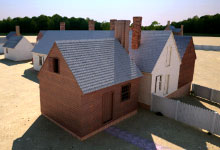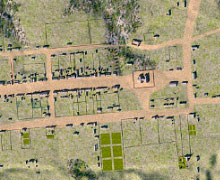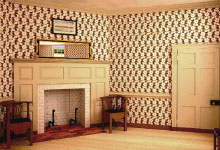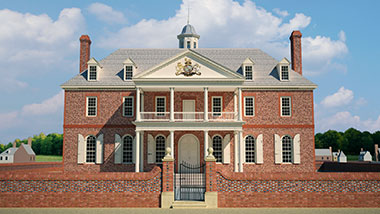
Virtual Williamsburg
A Digital Re-creation of the Historic City
Virtual Williamsburg is a 3D digital re-creation of Williamsburg as it appeared in 1776. Working neighborhood by neighborhood, the 3D modeling team has completed high-detail models of about 20% of the town's buildings. Twenty-one of the structures, selected for their historical significance, also include modeled interior spaces.


An Immersive Online Environment
Explore Virtual Williamsburg to see the city as it appeared on May 15, 1776—the day the fifth Virginia Convention, meeting in the Capitol, voted for its delegates to the Continental Congress to propose independence from Great Britain.
An Ongoing Project
Drawing on the accumulated knowledge and experience of Colonial Williamsburg's researchers—including archaeologists, architectural historians, and curators—computer modelers are meticulously reconstructing Williamsburg and its historical landscape. The process of recreating and visualizing the town has become an important research tool for the Foundation's scholars to better understand buildings, objects, and the landscape. New sites currently under development include the Market House and the Everard property, the first fully-domestic site to be modeled.
Leveraging Modern Technologies
Modern technologies, including CAD and 3D modeling software, make an accurate digital re-creation possible. Most buildings and objects are modeled from detailed measurements, but some especially complex objects—such as the life-size statue of Lord Botetourt in the Capitol loggia—are laser-scanned.
All sites are being modeled to reflect their appearance in 1776, but eleven have also been modeled in other time periods to illustrate other significant periods in their development. 3D visualization is an excellent way to visualize change over time, showing Williamsburg's development over the course of the 18th century and the impact of war on the town.
Acknowledgments
Virtual Williamsburg has received generous funding from the Institute of Museum and Library Services, the National Endowment for the Humanities, and the Andrew W. Mellon Foundation.





